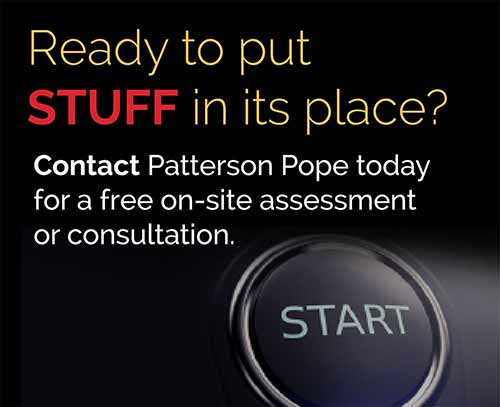
Whether you’re upscaling your business and moving to bigger premises or changing locations to seek out a more cost-efficient lease deal, relocating your business is no easy feat. It takes a lot of careful planning and preparation to ensure everything runs smoothly before, during and after.
Without the right approach, an office relocation can cause significant disruption to your daily operations and, ultimately, your business's profitability - luckily, that's where this article comes in. Covering a range of logistical and practical considerations, we’ll be providing you with the ultimate guide for a smooth office move.
1. Planning
Once you’ve made the decision to move and found the right new office location that suits your business’s needs, there are some fundamental planning steps you’ll need to take in order to ensure you’re ahead of the game.
Firstly, 3-6 months before your planned move, you need to start putting together your moving budget. This should calculate not just the cost of hiring professional removals, but also take additional expenses into consideration, such as postal redirects, tech set-up costs for your new office, updating company stationary with new contact details and the like.
You should also check the terms of your lease, as you may be accountable to pay for any damage to your existing premises that may occur during the move or lose your deposit if you’re ending your lease contract early. These added extras can easily eat into your planned budget if you’re not aware of them from the start.
In addition, it’s advisable to start putting a planning team together. While you will undoubtedly be responsible for planning key elements of the move, having a trusted team in place who you can delegate tasks to will ensure things run smoothly from start to finish.
Finally, we’d suggest researching moving insurance to establish if you’ll need specialist cover for transporting expensive equipment and machinery to your new premises. Damaged equipment is not only expensive to replace, but it could also cause delays in the set-up when you arrive at your new office, impacting your business's profitability in the process.
2. Communications
An office move can be an exciting prospect for some, but for others who are resistant to change it can be unsettling. To help quell any unease and potentially negative impact your move could have on staff morale and productivity, it’s essential to keep the lines of communication open with staff members throughout the process, being as transparent as possible.
It can also be a great way to bring a team together, as seeking their involvement in the process by delegating certain responsibilities to each team member will help them feel part of the process and more onboard as a result.
Secondly, don’t forget to notify your clients. Keeping them up to date on your moving timelines, new contact details and any other relevant information that may affect them will all go towards minimizing the disruption to your business (and theirs).
With staff and customers fully in the loop, you also need to notify your landlord or property manager of your moving plans, contact service providers and inform any local business partners, affiliates and suppliers of your move. Provide them with details on your new address, contact details and moving date, so they can update their records.
With modern offices having such a heavy reliance on technology, it’s also advisable to have a separate planning meeting and strategy in place with your IT engineers. Whether it’s an in-house team or remote support, notifying them as early as possible will ensure they have plenty of time to plan ahead.
Finally, book your removal company for your desired day, ensuring they’re fully briefed on your requirements and you know exactly what services are included in your quote - the last thing you want are any nasty surprises or added costs on moving day. If possible, arrange for the majority of the move to happen out of office hours as this will help to reduce the effect on business operations and profitability.
3. Preparation
With your plans and communications taken care of, it’s time to get into the nitty-gritty - figuring out the logistics of the actual move. While the bulk of the logistics will take place on the day, there is still a huge amount of pre-moving day prep that needs to be taken care of to ensure things run without a glitch on the big day.
Start by getting a detailed floor plan of your new premises and taking detailed measurements of the area. This will allow you to configure the most suitable layout in advance, saving valuable time on the day. In addition, you’ll benefit from being able to better plan the packing and unpacking order to ensure items can be offloaded and slotted straight into position at the time.
To get ahead of the packing, prioritize packing up the least important items first such as filing or spare furniture that’s not being used, arranging for it to be put in a secure storage facility until you’re ready to move it into your new premises.
The next stage is to compile a comprehensive inventory list of all furniture, equipment and any other items that will be heading over to the new place. Within this, we’d recommend categorizing your inventory into specific departments and using a color-coded system for each one. That way, you’ll be able to easily identify which pieces go where on your floor plan. Enlisting the help of your planning team here to help manage the labeling process should make the process smoother.
Within your inventory planning, you should also ensure you have an up to date employee list and assign each member with a specific number that will be detailed on the floor plan. They can then use this number to label all their equipment on the desk and it should, in theory, make its way to their new desk without any problems.
To ensure desktop equipment and belongings are suitably packed, provide employees with ample supplies of quality cardboard boxes, strong packaging tape and the appropriate labels. Tasking individuals with the responsibility of packing up their own desks will help to ease the burden of moving day preparation for everyone, as well as minimize disruption to day-to-day operations as they can do this as the last job before the off.
Finally, don’t forget to arrange professional cleaning services for both properties - ensuring you leave your old place looking spotless and start your new chapter in a clean and hygienic environment.
4. Making the move
With all the above preparations, you should be able to execute your moving day with minimal fuss, as boxes will be packed, ready to be loaded and shipped to their new home. However, there are a few extra things to think about during the actual process.
For one, ensure all staff, removal companies and any other involved parties are fully briefed on the timeline for the day and have your emergency contact numbers if needed. This will ensure the move keeps to your planned schedule and any problems can be quickly resolved. You should also allow some additional budget and time for refreshment breaks - after all, moving can be thirsty work!
To reduce the amount of business downtime, it’s advisable to allow tech equipment, computers and phones to be shipped first to the new location - this will allow your IT engineers sufficient time to carry out the necessary installations with fewer distractions.
It’s also advisable to minimize the number of people actually on-site during the move, as more bodies can make maneuvering more complicated and lead to confusion. While this isn’t ideal for business, facilitating staff to work remotely or work in temporary offices should allow the business to continue as usual on the whole.
5. Settling in
With the move completed, you can now focus your efforts on settling in and getting organized in your new home. As with the packing, taking a logical approach here is key to optimizing functionality right from the off.
Start with settling up your essential tech equipment and work stations so your employees can get back to their daily routines as quickly as possible. Similarly, prioritize setting up communal areas, providing a comfy retreat away from the possible distractions of getting the office fully up and running.
Moving offices also provides a great opportunity to get organized and declutter, and if your new premises don’t come equipped with built-in storage options, now could be the perfect time to start afresh. Whether it’s providing secure lockers in employee staff rooms to keep communal areas clutter-free or upgrading filing cabinets, this could be the ideal moment to introduce new storage solutions that will help to embed a clean and organized workspace that’s primed for productivity from the get-go.
There’s no escaping the fact that the planning and logistics involved with a business relocation can be daunting, but we hope this guide provides you with all the insights you need to pull off a successful move with minimal impact on your business’s bottom line.
Author bio:
Alex Jones is a content creator for No1 Packaging - one of the UK’s lowest cost packaging providers.










